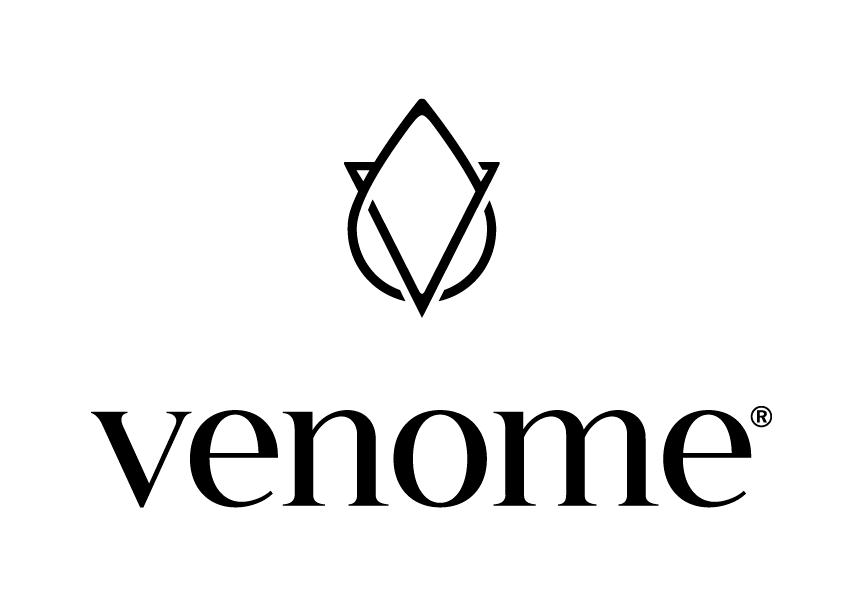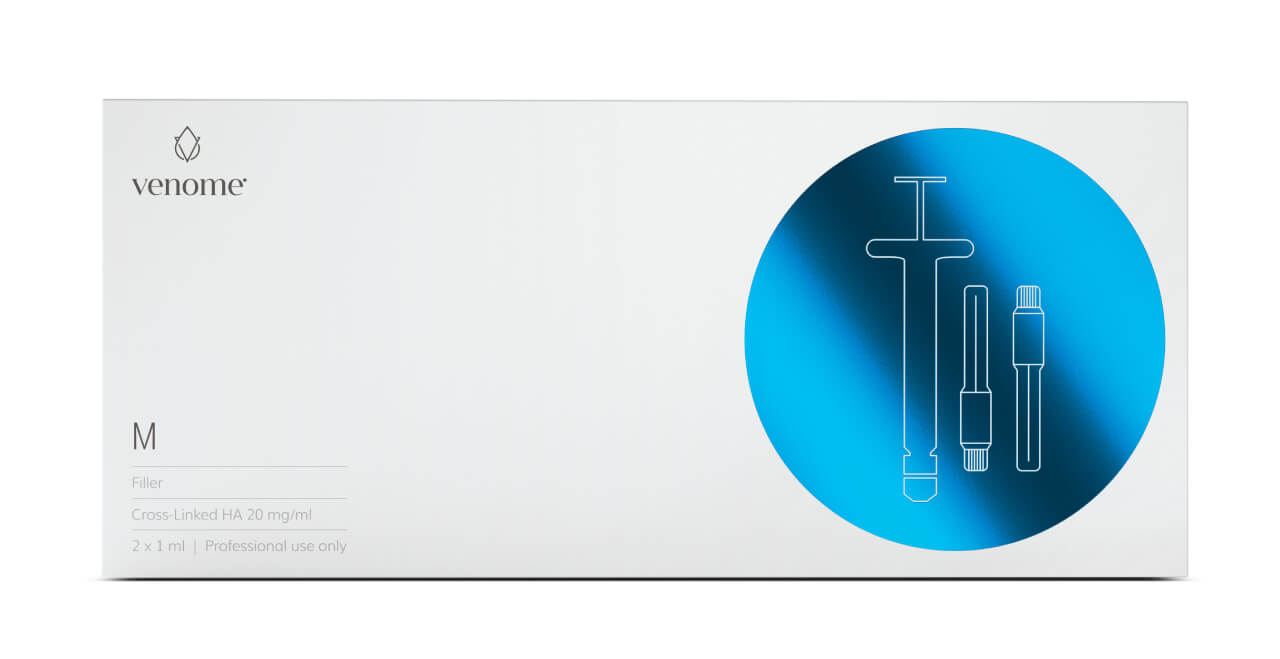FILLER M
Removes medium and deep lines, increases skin elasticity, eliminates sagging. Venome Filler M is a versatile product for complete removal of medium wrinkles and softening deep wrinkles and nasolabial folds. Owing to its fully hydrated formula and the use of the unique cross-linking technology, this monophasic hyaluronic acid gel spreads evenly in the tissue, making the skin firm and smooth and eliminating wrinkles without excessive swelling — which can happen when the HA molecules are overly hygroscopic. Can be used to complement treatments with Venome Filler S and L. The effect lasts between 5 and 6 months, though this depends on the injection technique, as well as a number of biological and environmental factors.
Medical device for external use, to be used by medical professionals only.
The product contains 20 mg/ml of monophasic, cross-linked hyaluronic acid in the form of viscoelastic gel.
Venome Filler is contraindicated in case of:
- allergy to hyaluronic acid
- auto-immune disease or during immunotherapy
- acute skin infection in the area to be treated (e.g. acne)
- acute influenza and feverish cold
- acute systemic infection (herpes, psoriasis)
- coagulation disorder
- a tendency to form scars
- pregnancy or breast-feeding
- people under age of 18
Venome Filler must not be injected into:
- blood vessels
- joints
- breasts
Not recommended for treatment of orbita and front head lines.
Side effects:
Immediately after treatment, injection related reactions like redness and swelling and in rare cases itching or bruising may be observed at the injection site(s). The day after a pronounced swelling may occur but this will resolve spontaneously within 3-5 days. Allergic reactions are extremely rare, because Venome Filler is protein free due to the non-animal source.
Rarely, formation of nodules or oedema may occur at the injection site.
In case of an inflammatory reaction it is recommended that the patient visits the physician.
In the literature for filler materials based on hyaluronic acid, individual cases of granuloma, abscesses, delayed hypersensitivity reactions and discolouration have been reported. Furthermore in literature, other very rare individual cases of necrosis have been described, due to injection into arterial vessels or occlusion by the filler pressing against the arterial wall.

